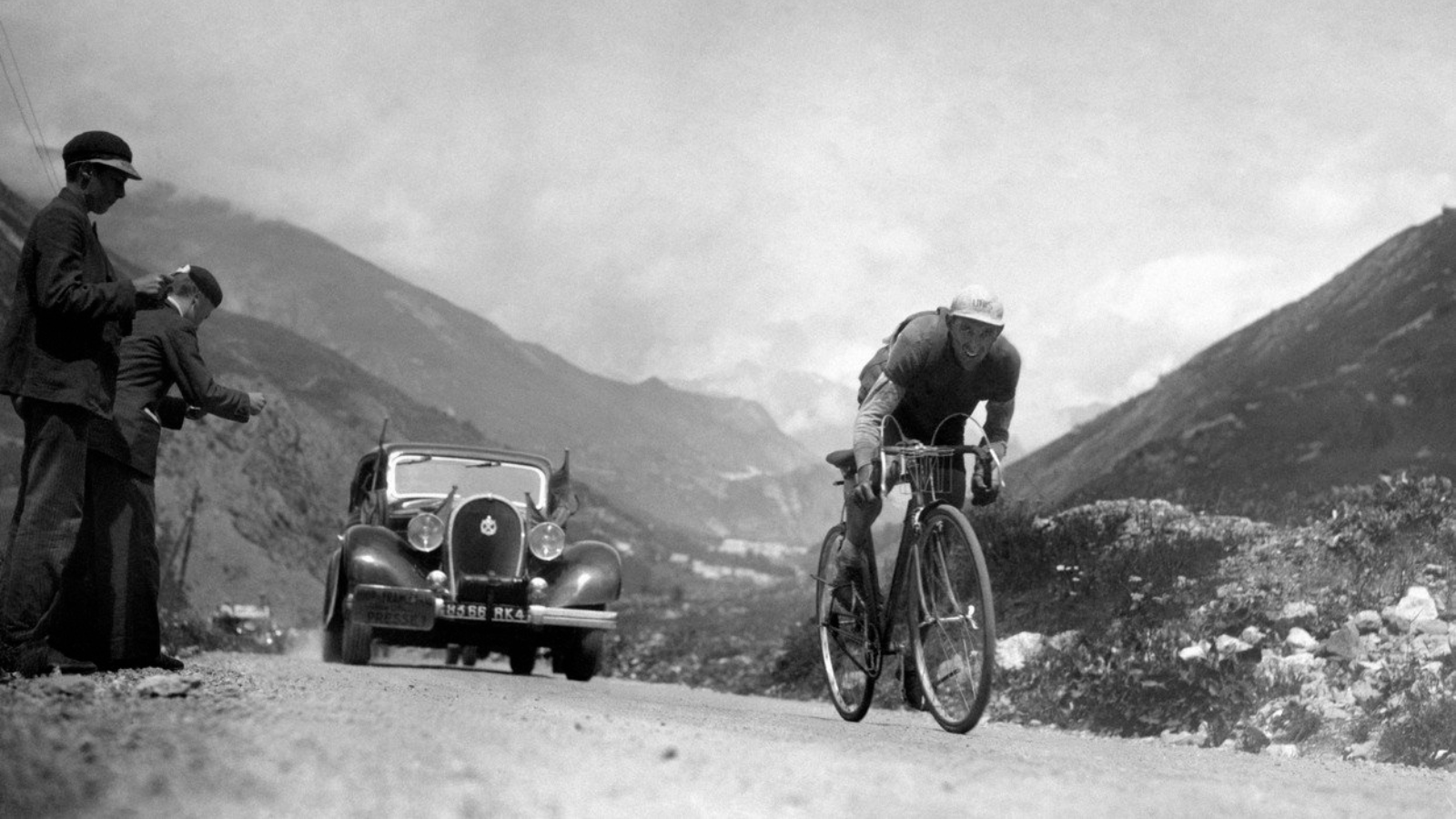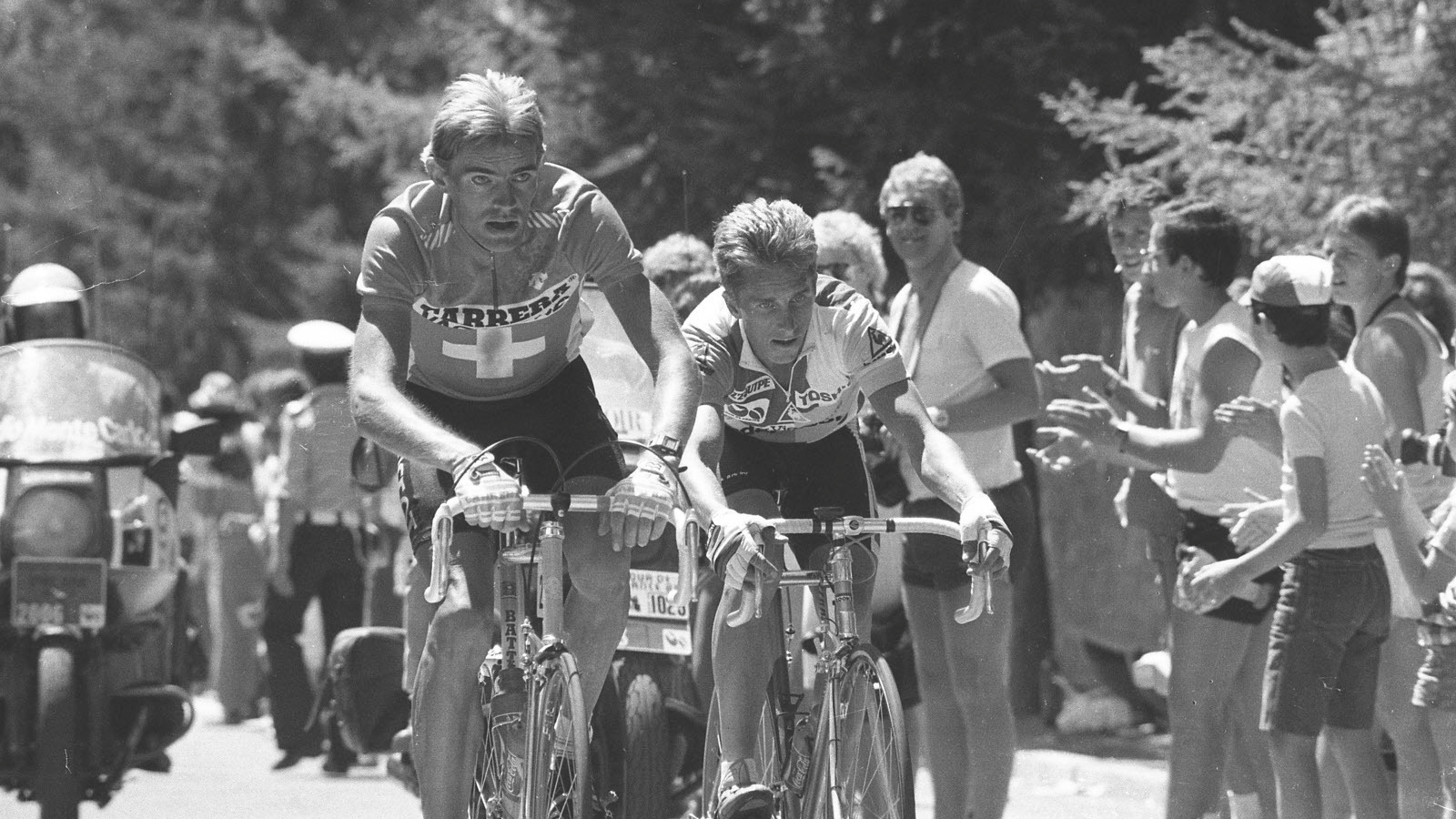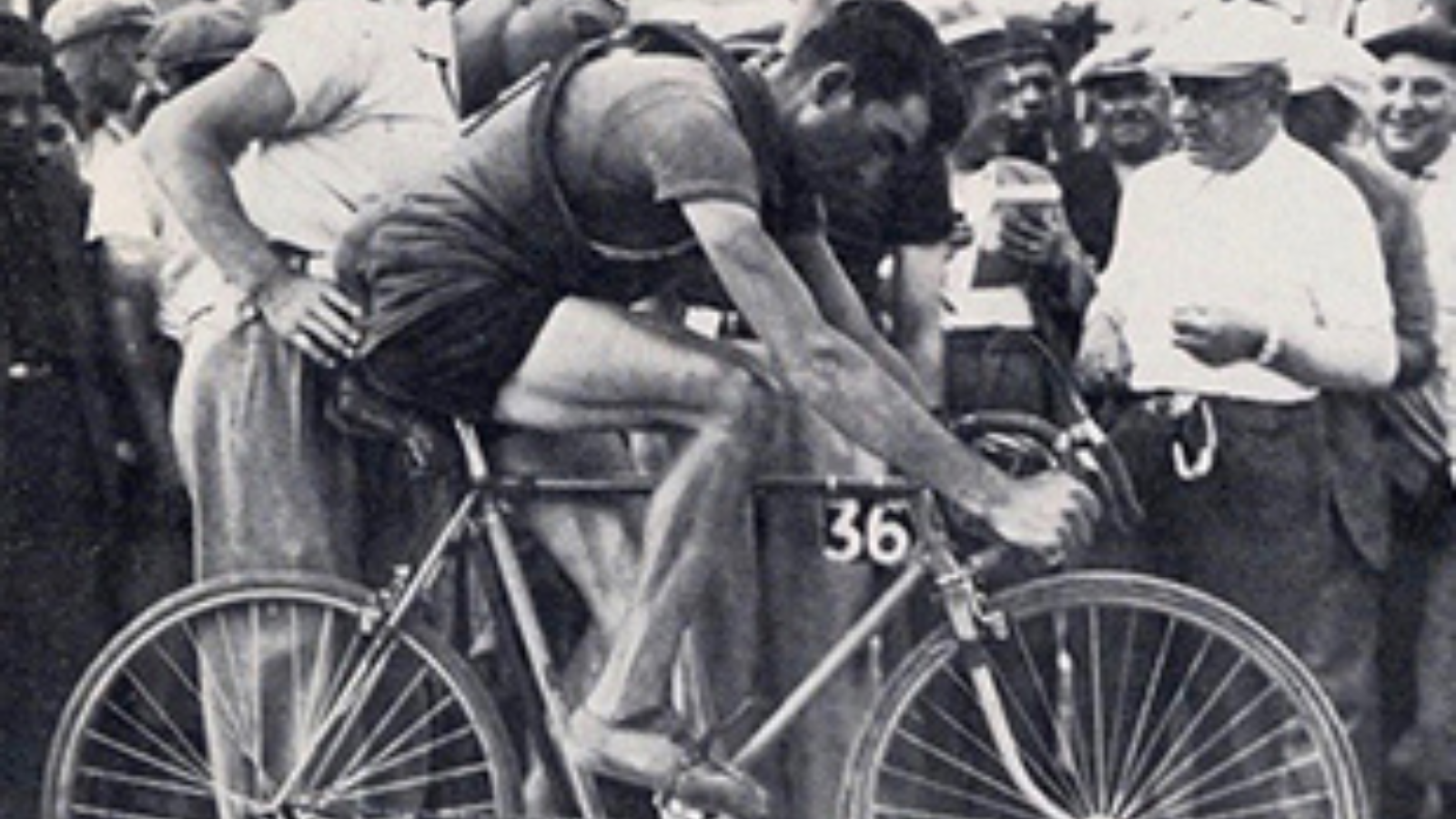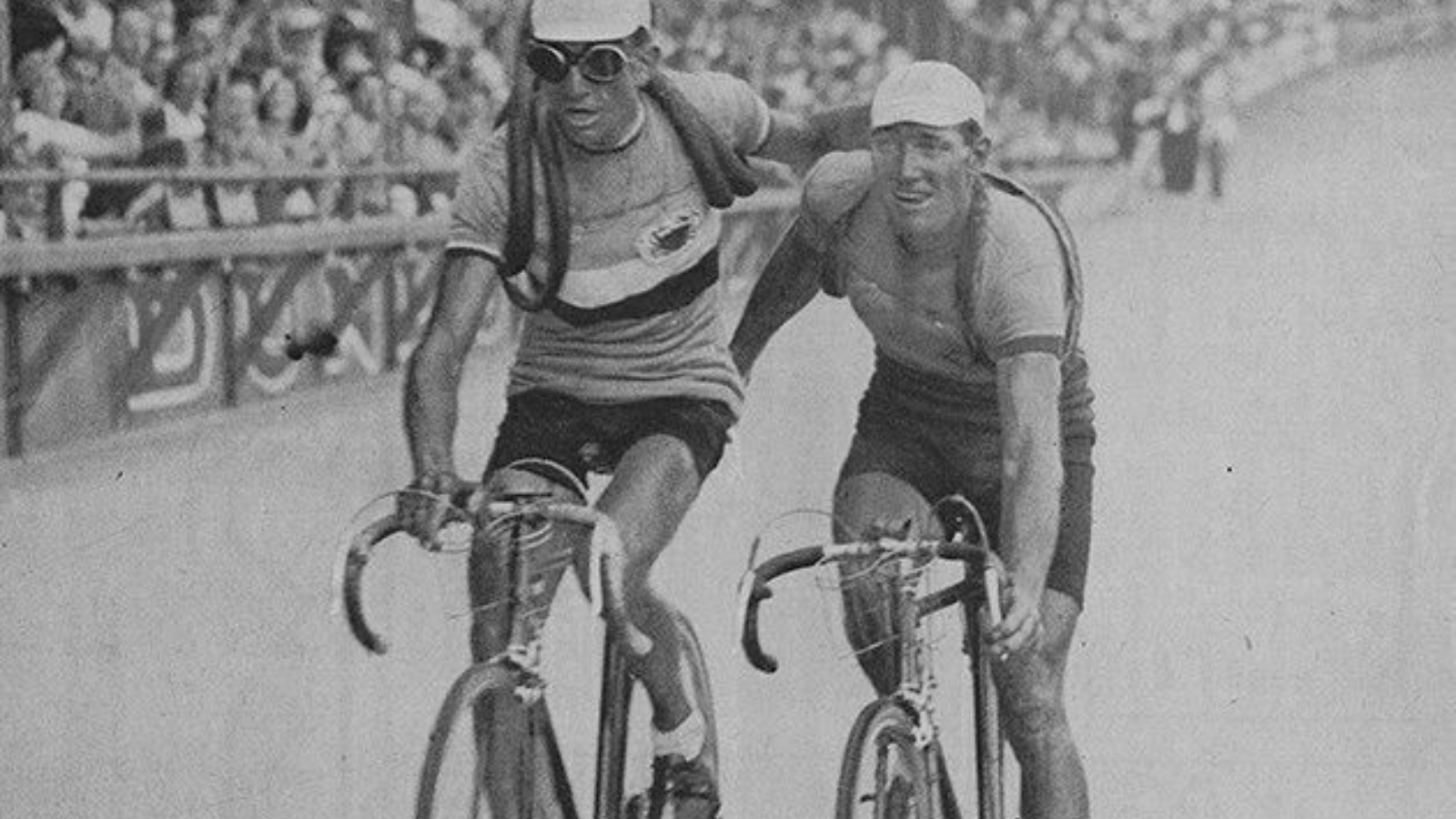Fédérico Ezquerra on the Galibier (Tour de France 1936)
Col du Galibier is one of the oldest participats among the ascents the peloton of Tour de France used to climb in the Alps. It was already part the program of the 1911 edition when the race visited the Alps for the very first time.
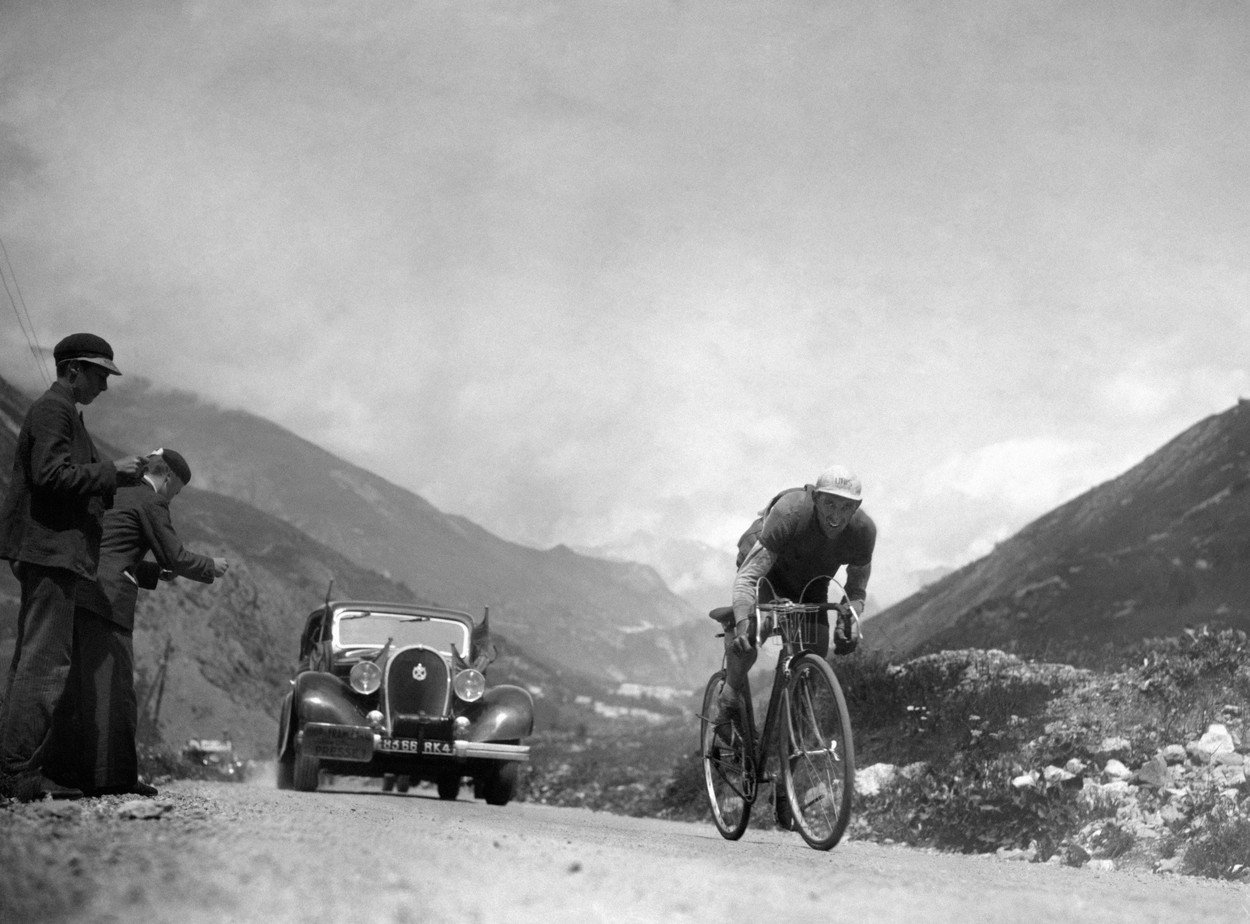
In 1936, Col du Galibier, alongside with Thélégraphe and Lautaret, was part of stage 7. (Usually, when the peloton climbs Galibier, they climb also Thélégraphe and Lautaret.) The 230 km long stage ended in Grenoble (hilltop finishes were introduced to Tour de France only in 1952), and a whole bunch of cyclists arrived with the same time
Among them was Fédérico Ezquerra (1909-1986), one of the best climbers of his era. (He is considered the first great Basque climber.) He finished third in the mountain classification in 1936, behind Julián Berrendero and Sylvere Maes (the winner of the general classification). Besides Col du Galibier, Ezquerra conquered Ballon d'Alsace, Aravis, La Turbie, and Puymorens that year.
It was not the first time he was first on Galibier, he had already a similar success two years earlier, during his debut participation at Tour de France.
MORE POSTS ABOUT TOUR DE FRANCE IN THE ALPS
Miguel Angel Lopez conquers Col de la Loze (Tour de France retrospective -TDF 2020)
Col de la Loze was introduced to Tour de France in the 17th stage in 2020. The day delivered a Pog&Rog Show, a Lopez solo and a suddenly disappearing Bahrain-McLaren “suicide squad”. The 2 minutes gap between the three breakaway riders (Julian Alaphilippe, Richard Carapaz, Gorka Izagirre) and the peloton at foot of the 21… Read More »Miguel Angel Lopez conquers Col de la Loze (Tour de France retrospective -TDF 2020)
Fédérico Ezquerra on the Galibier (Tour de France 1936)
Col du Galibier is one of the oldest participats among the ascents the peloton of Tour de France used to climb in the Alps. It was already part the program of the 1911 edition when the race visited the Alps for the very first time. In 1936, Col du Galibier, alongside with Thélégraphe… Read More »Fédérico Ezquerra on the Galibier (Tour de France 1936)
20 July 1986 Tour de France visits Col du Granon
The 190 km long stage between Gap and Serre Chevalier included Col du Vars, Col d’Izoard and it was the first time the race visited Col du Granon. Before the stage Bernard Hinault (La Vie Claire) led the general classification, but he dropped on the Col d’Izoard. He was suffering from an old knee injury.… Read More »20 July 1986 Tour de France visits Col du Granon
MORE POSTS ABOUT TOUR DE FRANCE IN THE 1930S
Antonin Magne on the Aubisque (Tour de France 1931)
The Col d’Aubisque is a true veteran among the iconic ascents of the Pyrenees, steeped in cycling history and tradition. This legendary climb has been a fixture in the Tour de France since 1910, when the race ventured into the high mountains for the very first time.
The first individual time trial at Tour de France
It’s well known that many major road cycling races were originally created for marketing purposes, as sports newspapers saw increased sales by covering these events. However, a lesser-known story is that even the format of the individual time trial in the Tour de France was influenced by a rivalry between two newspapers. L’Auto, the daily… Read More »The first individual time trial at Tour de France
André Leducq and Antonin Magne crossing the finish line together (Tour de France 1938)
Before Greg LeMond and Bernard Hinault on the top of Alpe d’Huez, there were André Leducq and Antonin Magne in Paris. Two dominant French riders from the first part of the 1930s, both Leducq (1930 and 1932) and Magne (1931 and 1934) won the Tour de France twice. In the very last stage of Tour… Read More »André Leducq and Antonin Magne crossing the finish line together (Tour de France 1938)

